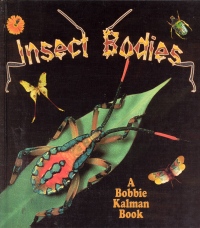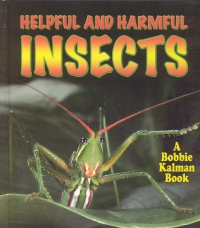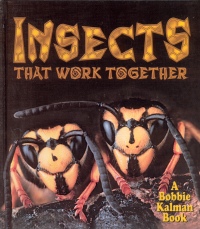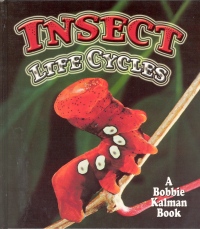| ________________
CM . . .
. Volume XII Number 4 . . . .October 14, 2005
excerpt:
This new series for the earliest readers is presented in the highly appealing format for which Crabtree publishers has become well-known. The reading level is suitable for the first 3 primary grades with easy-to-read text in large type, colourful close-up photos, clearly labeled diagrams and new vocabulary defined either in context or in the glossary. Besides the chance to learn new words, the young reader can enjoy "Did you know?" boxes with amazing facts: Did you know ..."All bugs are insects, but not all insects are bugs. Bugs are one kind of insect." Each book introduces insects by definition, using terms such as invertebrates, arthropods, exoskeletons, thorax, abdomen, before focusing on the individual topics of bodies, life cycles, socialization or helpful/harmful nature. The facts about helpful and harmful insects are kept in balance while specific insects' roles are described. The reader will learn that many insects feed on each other and that some which people may consider undesirable actually offer an important service such as scavenging (wasps) or mixing layers of soil (termites). Insects that Work Together highlights honeybees, wasps, termites and ants. Photo captions do an exceptional job of extending the learning from the main text. For example, a paragraph on shedding exoskeletons describes how larvae molt as they grow. The accompanying photo shows a caterpillar that "has finished molting. Its old exoskeleton is hanging from the plant stem. The new exoskeleton has become hard around the caterpillar's body." An interactive feature appears in all books in this series. One activity invites the reader to find comparisons between photos of juvenile forms of insects with the adult (Insect Life Cycles). Another suggests a back yard scavenger hunt after learning the basic body parts of insects in Insect Bodies. Instructions for the craft of building a honeybee hive are found in Insects That Work Together. Create a poster to show pictures of helpful insects and list the ways they help other living things after reading Helpful and Harmful Insects. Arm the youngest readers with the basic facts about nature, and their curiosity will lead them to explore further. The fascinating and clearly presented material in this series will lay the groundwork for in-depth reading in later grades. Highly Recommended. A resident of BC, Gillian Richardson is a former teacher-librarian and freelance writer.
To comment
on this title or this review, send mail to cm@umanitoba.ca.
Copyright © the Manitoba Library Association. Reproduction for personal
use is permitted only if this copyright notice is maintained. Any
other reproduction is prohibited without permission.
NEXT REVIEW |
TABLE OF CONTENTS FOR THIS ISSUE
- October 14, 2005.
AUTHORS |
TITLES |
MEDIA REVIEWS |
PROFILES |
BACK ISSUES |
SEARCH |
CMARCHIVE |
HOME |



